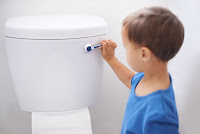The Four Planes of Development
We must, then, constantly bear in mind this fact that the growth of the child, from birth to maturity, is not like that of an oak tree which grows by simply getting bigger, but is rather to be compared with that of the butterfly; for we have to do with different types of mind at different periods. --Standing, E.M. Maria Montessori: Her Life and Work, p. 108
 |
Young child (0-3)
Image taken from: http://pacificriminternationalschool.org
/programs/nido
|
Through her extensive research and work with children, Maria Montessori discovered that there are different behaviors, characteristics and sensitivities apparent in each stage in life that reflects the changing needs of the individual. She saw development as having four stages, each very distinct, and these she called the Four Planes of Development. As her work evolved, she became focused on helping the human personality in children take form and then strengthen. Her tireless hours of observation and her work with young children gives us guidance about the way we can offer the appropriate help that the children need in the different stages in life.
 |
| Primary children working with puzzle map of Asia |
Montessori schools are typically designed with these planes of development in mind and the Montessori prepared environment (the classroom) provides the opportunity for those needs to be met. Each plane of development is characterized by different psychological and physical characteristics. Each plane lasts about six years. She also drew attention to the fact that development is not an even process—sometimes it moves quickly, sometimes it stagnates. The nature of development changes and the way a person experiences each plane depends on the foundation of the earlier plane. For example, if a child has his needs met at a given plane, he has a strong foundation on which to take advantage of the new experiences on the next plane. If a child does not get what she needs in a particular plane, the results can be seen in the next plane. If the needs are not met at the proper time, this impacts the whole life of the person.
 |
| Elementary (6-12) children working on the Timeline of Life |
Each of the planes can be further divided into two sub planes. Generally, the greatest changes take place in the first half of the plane and the second half is spent trying to strengthen and crystallize the experiences of the first half. The first and third planes have a lot in common in that they are both times of dramatic transformation. The human being goes from a fragile, helpless newborn to a walking, talking self-sufficient toddler in the space of three years. Children in both the first and third planes have a lot of sensitivities and are extremely fragile—they need lots of rest and get sick very easily. Similarly, the second and fourth planes are also closely related as they are periods of relative calm and stability.
 |
Adolescents (12-15) at work
Image taken from: https://www.privateschoolreview.com/
butler-montessori-profile |
As a result, the prepared environments need to take into consideration the child’s capabilities at each stage. The planes of development suggest that we group children together according to their characteristics—which is why Montessori classrooms are multi-age classrooms. The Montessori prepared environments are designed for the child in each plane of development. The Montessori classroom is a place that accommodates the child by acknowledging the way the tendencies are manifest and recognizing each child’s unique way of learning. (To be continued)
Rhonda Lucas-Sabater is an AMI Auxiliary Trainer at the Primary (3-6) level. She is the mother of five Montessori children and the co-founder of a public charter Montessori school in Washington, DC. She is also AMI trained at the Assistants to Infancy (O-3), Primary (3-6), and Elementary (6-12) levels and is an AMI certified Adolescent guide.





